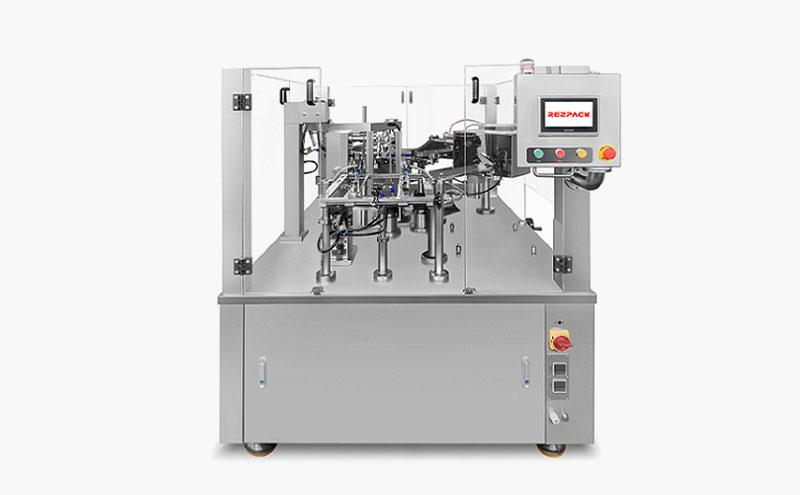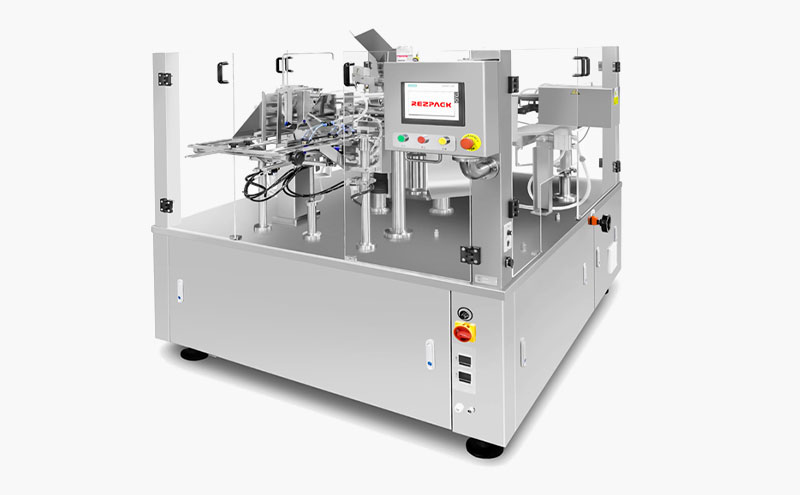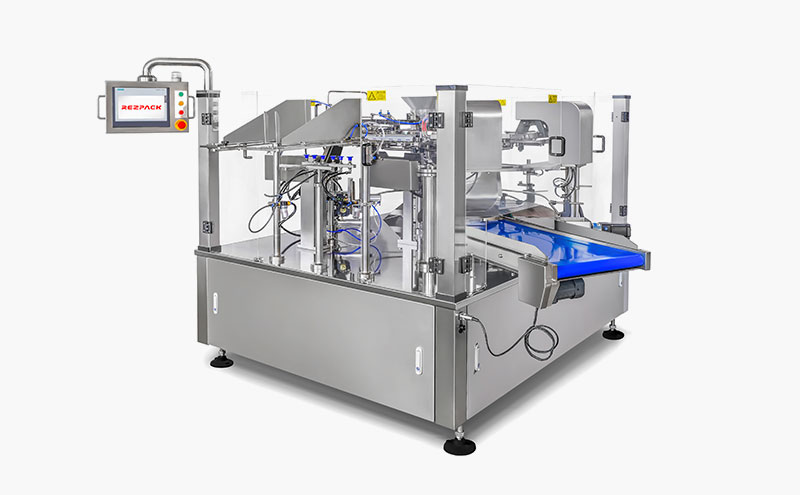| Bag Width Range | 80-240 mm | Weight | 1500 kg |
| Bag Length Range | 150-370 mm | Total power | 3.02 kw |
| Filling weight | ≤ 1500g | Compress air | ≥ 0.4 m³/min |
| Max Speed | ≤ 60 bags/min | Dimensions | 1860 mm*1520 mm*1550 mm |
A sachet is a small, sealed pouch typically used for packaging small quantities of products. These flexible containers are commonly made from materials like plastic, foil, or paper, and are designed to hold items such as spices, condiments, cosmetics, or pharmaceuticals. The term "sachet" originates from the French word for "small bag," and its design emphasizes portability and single-use convenience.
Sachets differ from larger packaging in their compact size and often feature resealable or tear-open structures for easy access. They are widely used in various industries due to their cost-effectiveness and ability to preserve product freshness. The manufacturing process of sachets involves precision machinery to ensure tight sealing and consistent quality, making them a popular choice for both commercial and consumer applications.
When it comes to creating sachets, specialized manufacturing equipment plays a crucial role in delivering efficient and reliable results. Here’s an in-depth look at various advanced machines revolutionizing sachet production:
1. Sachet Making Machines
Sachet making machines are designed to form, seal, and cut the packaging material into the desired pouch shape. These machines often incorporate automated systems to handle materials like polyethylene (PE), polypropylene (PP), or laminated films, ensuring uniform pouch dimensions and secure seals.
Modern sachet making machines feature adjustable settings for bag length, width, and sealing parameters, allowing manufacturers to produce various sachet sizes—from tiny 5ml condiment packets to larger 100ml liquid containers. Some models even integrate printing systems to apply branding, product information, or barcodes directly onto the sachet during production, enhancing efficiency for commercial use.
2. Precision Sachet Filling Machines
Complementing the making process, sachet filling machines are essential for accurately dispensing products into the pouches. These machines are engineered to handle different product types, including powders, liquids, granules, or pastes, with precision dosing mechanisms:
1. Flat Sachets
The most widely used design, ideal for single-use applications such as condiments, instant coffee, or detergent samples.
Compact and cost-effective for small-quantity packaging.
2. Stand-Up Sachets
Equipped with a gusseted base for stability, allowing the package to remain upright.
Commonly used for snacks, liquid sauces, and other products requiring shelf presence.
3. Zip-Lock Sachets
Feature a convenient resealable closure for multiple uses.
Perfect for cosmetics, dietary supplements, or any product requiring extended usability.
4. Medical Sachets
Manufactured with sterilized, high-barrier materials for safety.
Specifically designed for pharmaceuticals, including pills, ointments, and medical creams.
1. Rotary Premade Pouch Pick Fill Seal Machine
This advanced Rotary Premade Pouch Pick Fill Seal Machine is designed for high-speed processing of pre-made sachets. It features a rotary system that picks up pre-formed pouches, precisely fills them with the desired product, and seals them with utmost accuracy. Ideal for complex sachet designs, it ensures consistent filling even for viscous liquids or delicate powders. The rotary mechanism allows for speeds of up to 200 pouches per minute, making it perfect for large-scale production runs.
2. Rotary Vacuum Packaging Machine
Designed to enhance product shelf life, the Rotary Vacuum Packaging Machine removes air from sachets before sealing, creating a vacuum environment that prevents oxidation and microbial growth. This is particularly useful for perishable items like meats, cheeses, or snacks. The rotary design enables continuous operation, with multiple chambers working simultaneously to achieve high throughput—often exceeding 150 packages per minute. Its vacuum sealing technology ensures optimal preservation while maintaining the sachet’s compact form.
3. Carton Packing Machine
After sachets are filled and sealed, Carton Packing Machines come into play to organize them into retail-ready cartons. These machines automatically count, stack, and place sachets into cardboard boxes, ensuring neat arrangement and efficient packaging. Equipped with robotic arms and vision systems, they can handle various sachet sizes and configurations, even adapting to irregularly shaped pouches. Some models can pack up to 100 cartons per minute, streamlining the final stage of the production process.
4. Thermoforming Machine
Thermoforming Machines offer a versatile solution for creating sachets from flat plastic sheets. The process involves heating the plastic to a pliable state, forming it into molds to create the pouch shape, filling it with product, and then sealing it. This method is ideal for custom-shaped sachets or those requiring unique structures. Thermoforming machines can work with a wide range of materials, including biodegradable films, and offer high precision in pouch formation. They are suitable for both small-batch and large-scale production, with some models capable of producing over 300 sachets per minute.
5. Horizontal Flow Wrapper
Perfect for packaging multiple sachets together or wrapping individual items, the Horizontal Flow Wrapper uses a continuous film to enclose products in a horizontal motion. This machine is highly versatile, able to wrap sachets of different sizes and shapes, as well as bundle multiple sachets into a single package. It features adjustable film tension and sealing parameters to ensure tight, secure wrapping. With speeds reaching up to 400 packages per minute, it’s an efficient choice for high-volume production lines.
6. Multi-head Weigher
Accuracy is key in sachet filling, and the Multi-head Weigher delivers precise dosing for granular or powdered products. This machine uses multiple weighing hoppers to measure product quantities with exceptional accuracy, typically within ±1 gram for most applications. It works in conjunction with filling machines to ensure each sachet receives the exact amount of product. The multi-head design allows for rapid weighing and dispensing, with some models capable of handling up to 100 weighments per minute, making it essential for high-speed production lines.
Recent advancements in sachet manufacturing equipment focus on sustainability and versatility. Biodegradable material-compatible machines now allow producers to create eco-friendly sachets from plant-based films, while multi-functional machines can switch between different materials and filling types with quick-changeover components. Smart controls and IoT connectivity in modern machines also enable real-time production monitoring, error detection, and maintenance scheduling, enhancing overall operational efficiency.
Sachets serve as indispensable packaging solutions across industries, and their production is driven by a diverse range of sophisticated machines. From precise filling and sealing to advanced vacuum packaging and carton packing, each piece of equipment plays a vital role in ensuring sachets meet both functional and commercial requirements while adapting to evolving market demands.

| Bag Width Range | 80-240 mm | Weight | 1500 kg |
| Bag Length Range | 150-370 mm | Total power | 3.02 kw |
| Filling weight | ≤ 1500g | Compress air | ≥ 0.4 m³/min |
| Max Speed | ≤ 60 bags/min | Dimensions | 1860 mm*1520 mm*1550 mm |

| Bag Width Range | 180-300 mm | Weight | 1800 kg |
| Bag Length Range | 150-450 mm | Total power | 3.62 kw |
| Filling weight | ≤ 2500 g | Compress air | ≥ 0.4 m³/min |
| Max Speed | ≤ 50 bags/min | Dimensions | 2080 mm*1720 mm*1650mm |

| Bag Width Range | 270-400 mm | Weight | 2500 kg |
| Bag Length Range | 150-600 mm | Total power | 3.62 kw |
| Filling Range | ≤ 5000g | Compress air | ≥ 0.4 m³/min |
| Max Speed | ≤ 30 bags/min | Dimensions | 2150 mm*2020 mm*1700 mm |
GET A QUOTE